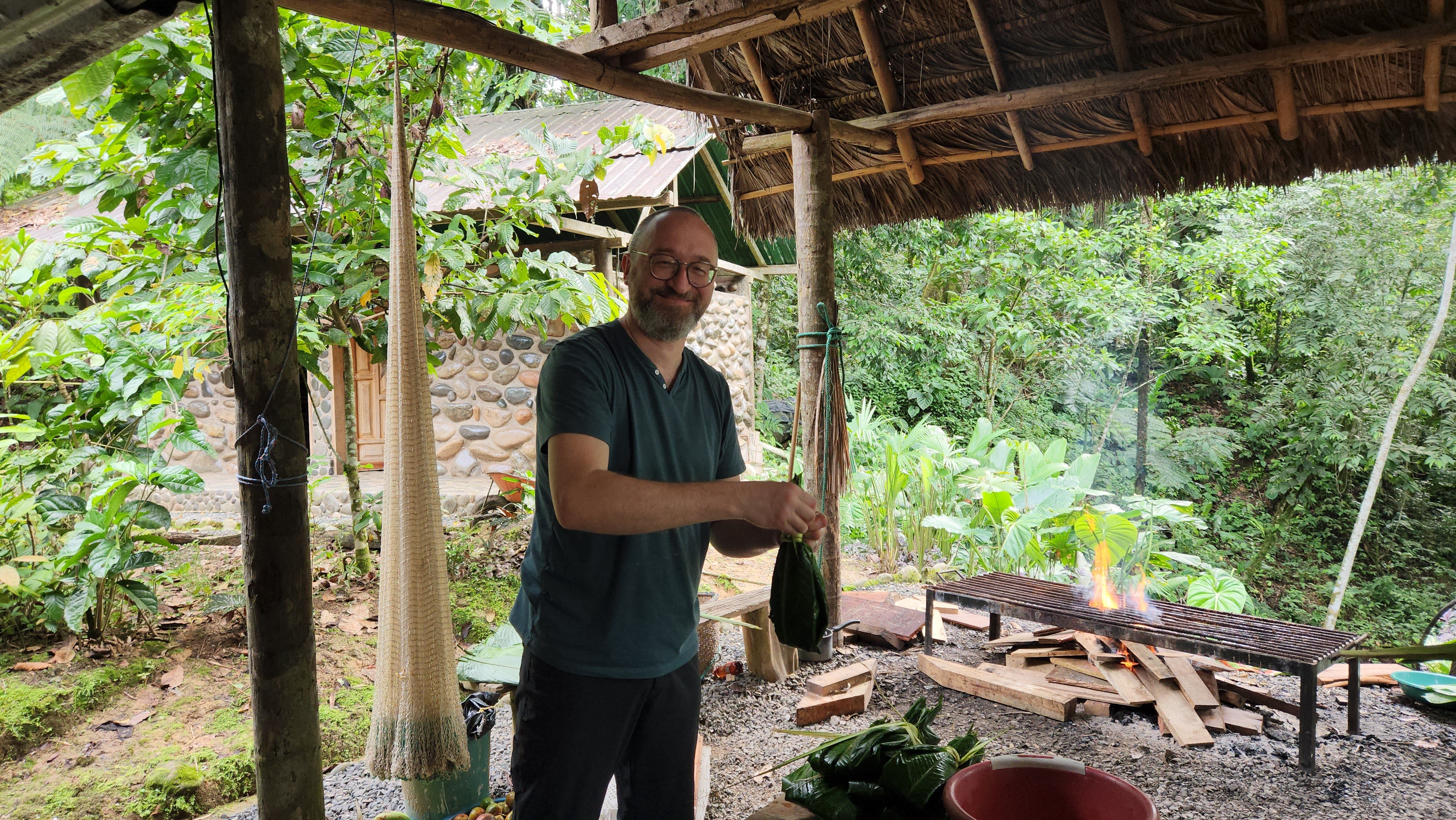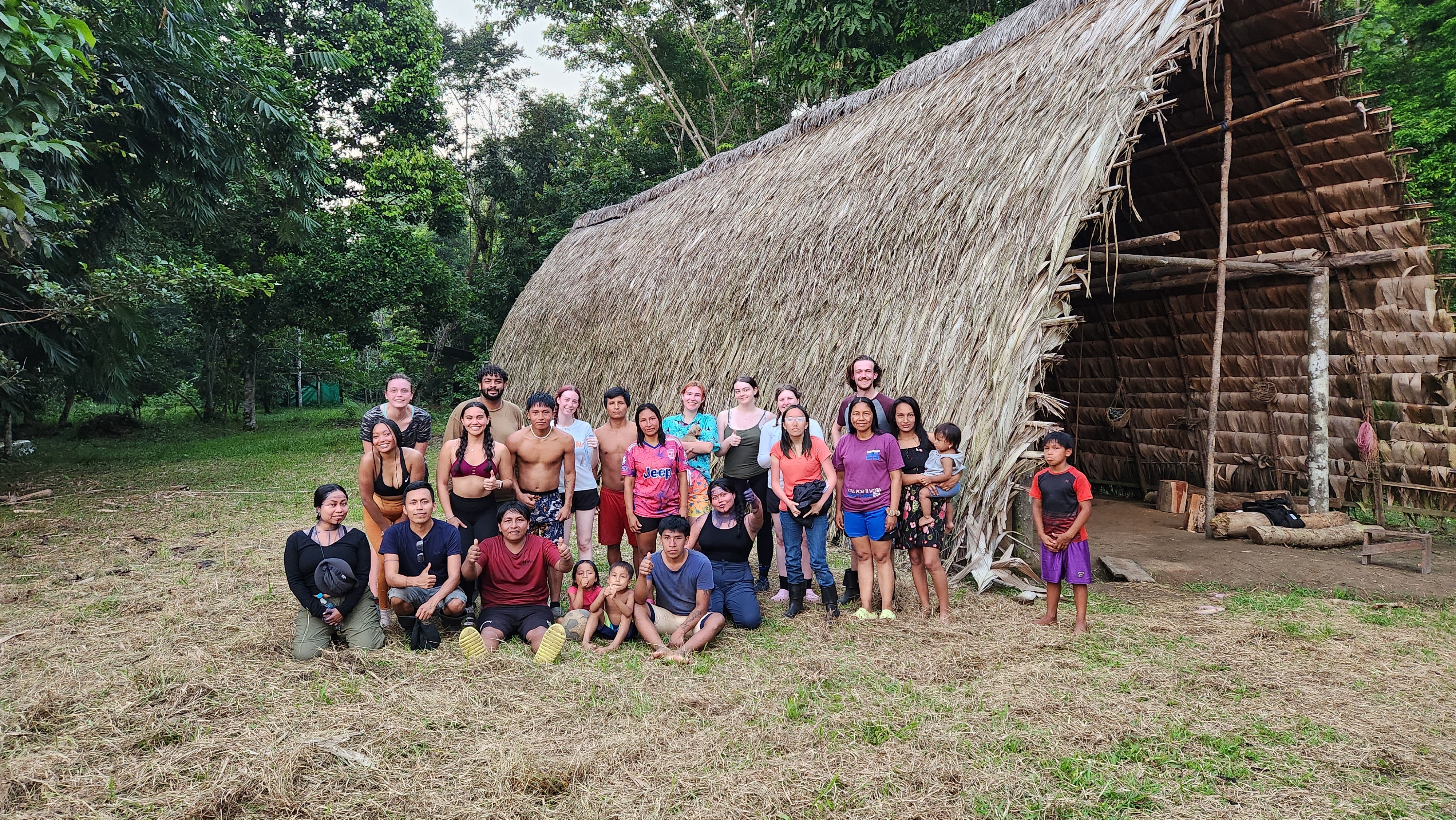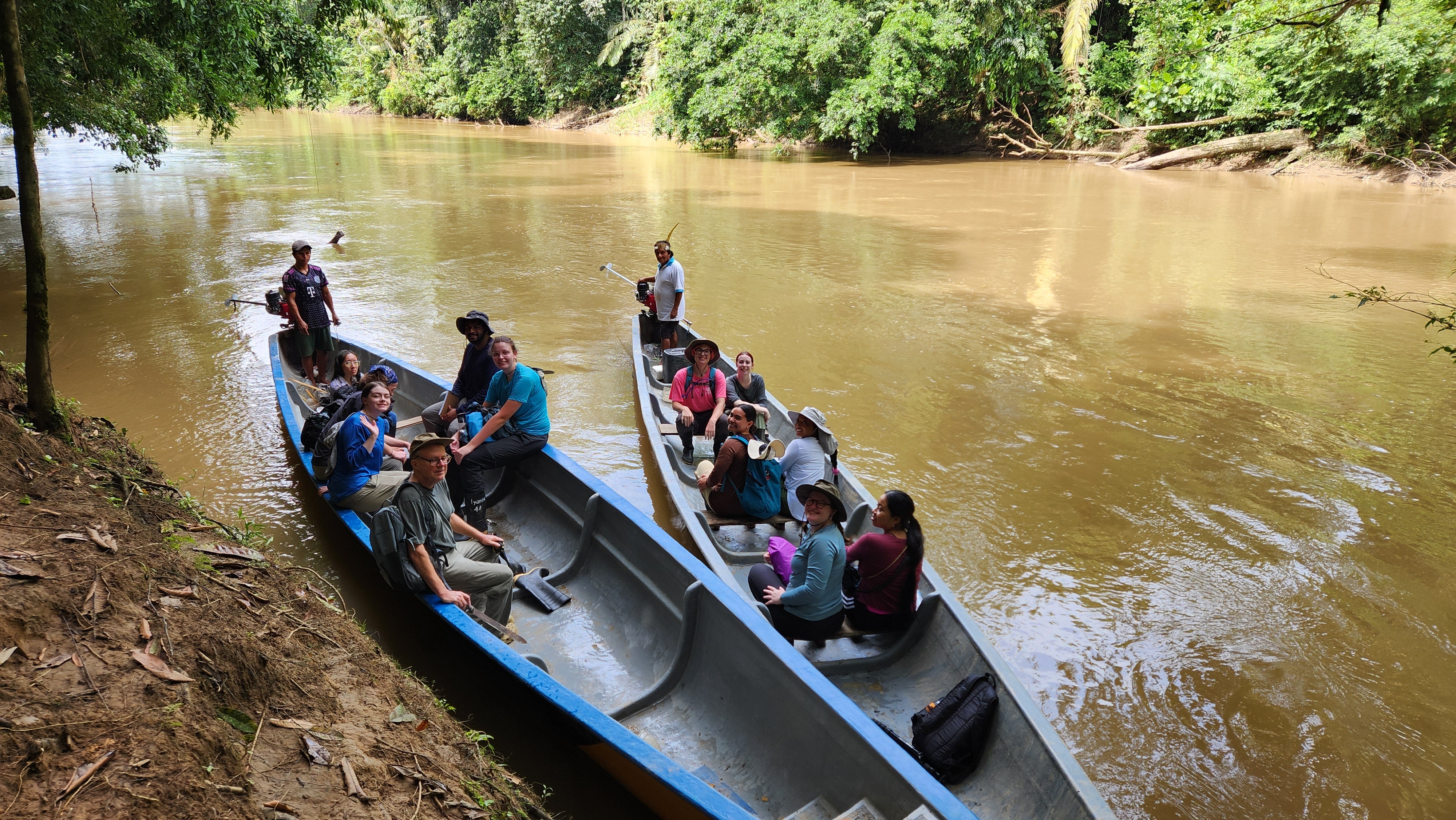When you think of climate change and saving Earth from more disastrous consequences, you likely think of the melting of ice caps, or endangered animals. You probably aren’t thinking about endangered languages and cultures. On March 15th of this year, Dmitiry Babichenko and his Computing Technologies for Cultural Preservation class returned from their trip to Ecuador where they had been collecting data during the entirety of their spring break. This is the first year that this course, created in collaboration with the Dietrich School of Arts and Sciences Department of English, Pitt’s School of Computing and Information’s Department of Digital Narrative and Interactive Design (DNID), Pitt’s Center for Latin American Studies, Pitt Global Studies, and Arizona State University, was offered to Pitt students. It gave the undergraduate students a look into preserving indigenous communities' history, language, traditions, and culture.
The journey to the Amazon Rainforest was phase two out of three for the course. It included students gathering as much information as they could about the Kichwa and Waorani communities. Once the class returned from their trip they began phase three: system implementation including generating a virtual world based on the data collected.
Before this capstone course became a reality, Babichenko and other researchers from Arizona State University, Brigham Young University, and the Andes and Amazon Field School had asked the question “How can we use technology to stop the disappearance of these cultures and connect them to scientific culture?” From there, they started developing a digital game-based program that would help teach people endangered languages. The program, called LanguageQuest, would put learners in a virtual environment that was based on Kichwa myths. The Kichwa language is a Quechuan language dialect that is only spoken by an estimated half a million people where as Quechaun is spoken by 8-12 million people. According to Unesco, 40% of languages worldwide are endangered and could disappear within this century. This doesn’t only include the language itself, but also the traditions and knowledge that are housed within those languages.

For Babichenko, the other researchers, and his students, preserving this information is vital. Many native cultures are shrinking and being threatened by climate change, globalization, loss of habitat, and younger generations having to move to cities for education and work. Slowly their traditions and language are disappearing or becoming artifacts that are only accessible to academics via university and library archives. The Kichwa community cherishes their beliefs and traditional knowledge that has been passed down from generation to generation which has built relationships between the land and plants and animals around them with spirituality and culture and they don’t want to see that die out.
Most of the data for this project has been collected by Dr. Tod Swanson from Arizona State University in collaboration with his Iyarina Center for Learning. Swanson was raised in the Amazon and saw a need for science to help preserve the disappearing culture of the Kichwa natives and beyond. The data includes over 50 Kichwa narratives, a small collection of Kichwa narratives in video format which were recorded by Babichenko, and annotated cross-linked datasets connecting the narratives to scientific concepts such as animal and plant genera and species. Babichenko’s class added to the project by scanning and creating 3D models of objects and plant species associated with the culture and practices of the Kichwa people, collecting more narratives, mapping the terrain of the Ecuadoran Amazon, and making mock-ups of the website that will be used to host the project.
“They [the students] go into it and they wanted more background about the indigenous communities and their stories and history and all of that and they came out with interest and desire and hunger to learn more…the connection seemed to make quite an impact on them,” said Swanson of the Pitt students.


His classes are now working on a different interconnected virtual reality immersive learning experience that they’ve titled HeritageRoots. They want HeritageRoots to be used for both cultural preservation and as an educational tool that could link learning in school with learning out in the field with Elders. The team is co-designing this program with the indigenous communities to ensure that the Virtual Reality world they create is authentic, respectful of the cultures, and ethical. They want it to be a genuine reflection of these culture’s heritage. Some of the content they have gathered is sacred to the communities and will be forfeited from the program out of respect.
Most programs used for similar reasons to HeritageRoots are not available for the general public to use and usually focus on a single collection of stories. They do not connect and map stories, characters, and concepts across multiple cultures and languages. The program Babichenko and his team created uses 3D modeling and large language models to generate an animated world for learners to explore. HeritageRoots consists of two interconnected systems: 1) a web-based knowledge graph, data collection, and management system that stores, connects, and presents indigenous traditional knowledge in the form of narratives, myths, and testimonies from multiple cultures and languages and 2) a virtual environment rendering pipeline that generates virtual worlds based off this data.
Once this first leg of the project is completed, the team will have created interactive immersive representations of three Kichwa narratives: The Mother Turns Her Children Into Animals, Wanduk, and The Anaconda that Lives in Catfish Lake. Participants would be able to navigate the environment created from the narrative in a first-person perspective and interact with in-game objects such as flora, fauna, and artifacts. These objects then become portals to other stories. The objects will also create educational experiences for participants. For instance, if you click on the chonta palm to harvest its fruit you will have to figure out the tools and order of operations that are used by Kichwa communities to complete the task.


The research group hopes to eventually partner with the Carnegie Museum of Natural History to expand access to the program. The ultimate goal with HeritageRoots is to create the world’s largest virtual museum dedicated to these indigenous narratives.
“I am hoping we get to continue to do this long term,” said Swanson, a mutual feeling he shares with Babichenko.
The HeritageRoots website and data repository were launched at the end of April and is still in the beta-version as data is being continually added and uploaded. The Virtual Reality program will launch by the summer of 2024.
